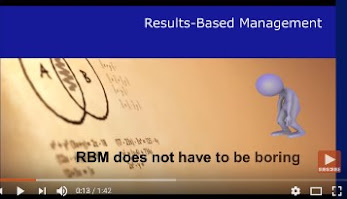--Greg Armstrong--
“Facts are Sacred”, The Guardian Datablog says, and the Guardian challenges us to examine those facts carefully, as its recent story on the "3 Little Pigs" illustrates.
While creative visualizations of indicator data undoubtedly make it more interesting, without informed explanation of what the information means, the visualizations can often be misleading. The Guardian Data Store and the Guardian Datablog provide an example of how journalists bring images, indicator data and intelligent analysis together.
While creative visualizations of indicator data undoubtedly make it more interesting, without informed explanation of what the information means, the visualizations can often be misleading. The Guardian Data Store and the Guardian Datablog provide an example of how journalists bring images, indicator data and intelligent analysis together.
[Edited to update links, June 2018]
Level of Difficulty: Moderate to Complex
Primarily Useful for: Aid agency communications managers, creative programme reporting staff
Most useful: The Development Data directory
Limitations: The raw data searches work only intermittently, and the Kindle format reduces the utility of the Ebook.
Who this is for
Not everyone will be able to produce the kind of data visualizations presented by the Guardian, but we can all benefit by the examples the news site provides of where to get data, how to present it, and what kind of questions are necessary in determining the reliability and validity of indicator data.
Those who may have the resources to actually produce these kind of visualizations will probably not be working at a project level. But aid agency communications staff, and some large agencies at the country level, may have the intellectual and financial resources to do what the Guardian data team does.
Background - data visualization
Many development workers, project managers, monitors, evaluators, wading through dense international development project reports and evaluations, may wish that more attention could be paid to making indicator data more understandable.
The late Hans Rosling, for example, is well known for creative presentations on indicators.
These are intended, as the Gapminder Institute puts it, to “unveil the beauty of statistical time series by converting boring numbers into enjoyable, animated and interactive graphics”. But doing this at the project and programme level in international development can be challenging.
And as entertaining as animations, graphs or pictures are, by themselves they can be misleading. Hans Rosling does more than provide the graphics, of course. He interprets what the data and the graphics can tell us, in clear, compelling language.
The Gapminder Institute is not alone, however, in presenting – and interpreting - indicator data in a compelling manner.
The Guardian Data Post and Datablog
News websites reach millions of people a day, and among these the most creative in obtaining and utilizing data in compelling visualizations is by far the The Guardian. The Guardian newspaper’s online site with more than 29 million unique visitors in December 2011 alone, is the fifth most visited newspaper, and among the most respected sites on the internet.
The most interesting part of the Guardian site, (aside from 3 Little Pigs ad) for many of us working in international development is the Guardian Datablog, and the associated Data Store, its directory of all of the statistics the Guardian uses as it reports the news. This includes World Government data search, a Development data search, examples of featured data visualizations and a link to an electronic version of Facts are Sacred, a new book by Simon Rogers, one of the Guardian’s news editors, on how The Guardian collects and presents data,. He is also editor of both the Data Store and Datablog.
The Guardian itself, in its main economic, political, health or education pages publishes mainline news stories. What the Datablog does, as far as I can see, is highlight the stories making innovative use of publicly available data, explain where the data come from, and then challenge readers to question it, or do more with the information. In some cases the Guardian Datablog appears to produce its own visualizations from raw data sources, but in most, it seems, the Datablog team provide a link to, or a variation on another agency’s visualization – and then they provide The Guardian’s explanation of what the information means.
Scope of the Guardian’s data
The Manchester Guardian, one of the UK’s oldest newspapers, was founded in 1821 and established its online site almost 175 years later, in 1995. The Guardian Datablog was established in 2009 to explore what editor Simon Rogers refers to as data journalism – journalism which mines available data looking for hidden or emerging stories.
As he points out, data journalism is not new – good journalists have been using obscure data as the basis for breaking news for centuries.
The Datablog, between January 15, 2009, and the time it produced a summary of all of the blog’s comments on data journalism, on July 15, 2011, listed 1,407 articles or blog posts, including links to all of the available underlying data in spreadsheet format. It is unclear why that information had not been updated since it was posted in 2011, but by my very rough estimate as I write this in March 2012, there have been approximately 490 - 500 additional posts between August 2011 and February 28, 2012. This brings the total to approximately 1,900 articles - all with some form of graphic – tables, charts, static or interactive, simple or complex, and all challenging us to use the underlying data ourselves in whatever way makes sense to us.
This is a mind-boggling number of analyses, given the detail involved - over 10 such articles a week for two and half years – and it does not necessarily represent the true extent of the work The Guardian has done.
As just one example, one story, by The Guardian Data editor about Malaria, referenced in the Datablog on February 3, 2012, for example, was preceded and followed within a week, by at least three other stories on Malaria in the main section of the Guardian (by the health editor), in the Guardian Weekly, and in the New Review section of the Guardian’s sister publication the Observer.






